 W
WArmanda Degli Abbati, also known as Armanda Degli Abbati Campodonico, was an Italian opera singer who sang leading mezzo-soprano roles in the opera houses of Italy, South America, and Russia. In 1926 she settled in Estonia where she became a noted vocal pedagogue and trained a generation of Estonian opera singers. She was deported from Estonia during the Soviet occupation in World War II and is presumed to have died in a prison camp in Karaganda.
 W
WAnna Ivanovna Abrikosova, later known as Mother Catherine of Siena, O.P., was a Russian Greek-Catholic religious sister, literary translator, and victim of Joseph Stalin's concentration camps. She was also the foundress of a Byzantine Catholic community of the Third Order of St. Dominic which has gained wide attention, even among secular historians of Soviet repression. In an anthology of women's memoirs from the GULAG, historian Veronica Shapovalova describes Anna Abrikosova as, "a woman of remarkable erudition and strength of will", who, "managed to organize the sisters in such a way that even after their arrest they continued their work." She is also mentioned by name in the first volume of The Gulag Archipelago by Alexander Solzhenitsyn.
 W
WChristian Arro was an Estonian agriculturist, farmer and politician.
 W
WJonas Aukštuolis was a Lithuanian diplomat. During World War I, he worked for the Lithuanian Society for the Relief of War Sufferers and was sent to Stockholm to organize contacts with German-occupied Lithuania. He was the Lithuanian representative in Sweden and Norway (1919–1922), Netherlands (1921–1922), Latvia (1923–1927), Estonia (1923–1930), Finland (1929–1934), Czechoslovakia (1932–1934), Argentina, Uruguay, and Brazil (1934–1939). In 1939, he was recalled to Kaunas and was deported by the Soviets to a Gulag camp in June 1941. He died in one of the camps in Mordovia.
 W
WNikolay Georgiyevich (Yegorovich) Bekryashev was a Russian painter. He was the director of the Museum of the Northern Dvina Culture from 1924 to 1938 and is credited with the preservation of most of historical and architectural heritage of the town of Veliky Ustyug.
 W
WAdo Birk, was an Estonian politician who was the Estonian Prime Minister for three days, from 28 July 1920 to 30 July 1920.
 W
WEugeniusz Bodo was a film director, producer, and one of the most popular Polish actors and comedians of the interwar period. He starred in some of the most popular Polish film productions of the 1930s, including His Excellency, The Shop Assistant, Czy Lucyna to dziewczyna?, and Pieśniarz Warszawy.
 W
WNykyta Budka was a clergyman of the Ukrainian Greek Catholic Church who lived and worked in Austria-Hungary, Canada, Poland, and the Soviet Union. In Canada, he is noted as the first bishop of the Ukrainian Catholic Church in Canada, and was the first Eastern Catholic bishop with full jurisdiction ever appointed in the New World.
 W
WYusif Vazir Chamanzaminli, also spelled Chemenzeminli, born Yusif Mirbaba oghlu Vazirov was an Azerbaijani statesman and writer known for his novels, short stories, essays, and diaries. Evidence points to the fact that Chamanzaminli was the primary core author of the famous romance novel Ali and Nino first published in 1937 in Austria under the pen-name of Kurban Said.
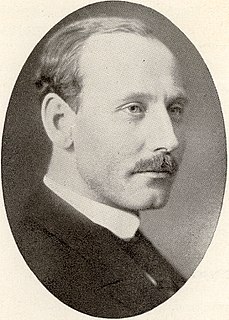 W
WKaarel Eenpalu was an Estonian journalist, politician and head of state, who served as 7th Prime Minister of Estonia.
 W
WAleksander Hellat was an Estonian politician and a former Minister of Foreign Affairs of Estonia. After Estonia had been annexed by the Soviet Union, Hellat was arrested on 24 September 1940 by the NKVD and deported to a prison camp in Siberia, where he died three years later.
 W
WJaan Hünerson was an Estonian agronomist and politician.
 W
WJohan Jans was an Estonian politician. He was a member of Estonian Constituent Assembly.
 W
WRūdolfs Jurciņš was a Latvian basketball player. He played as a center. Jurciņš won a gold medal at the 1935 EuroBasket competition, becoming first European champion. He participated at the 1936 Summer Olympics, where Latvia national basketball team got 15th/18th place.
 W
WHarald Kaarma was an Estonian footballer.
 W
WAnton Kaindl was an SS-Standartenführer and commandant of the Sachsenhausen concentration camp from 1942-1945.
 W
WAugust Eduard Kastra was an Estonian journalist and a trade union leader. He was the first chair of the Confederation of Estonian Trade Unions in Estonia and a member of the Reval (Tallinn) Committee of the Russian Social Democratic Labour Party (RSDLP) in early 20th century. Imprisoned during Joseph Stalin’s great purge in 1936, he died in the Gulag concentration camp in October 1941.
 W
WJaan Kriisa was an Estonian lawyer and politician. He was a member of I Riigikogu.
 W
WJuhan (Johann) Kukk VR III/1 was an Estonian politician.
 W
WAnts Kurvits or Hans Kurvits was an Estonian military commander, reaching rank of major general. He participated in the Estonian War of Independence and later became the founder and long-time leader of the Estonian Border Guard. Kurvits also served briefly as Minister of War.
 W
WAlbert Eduard Kusnets was a middleweight Greco-Roman wrestler from Estonia. He competed in the 1924 and 1928 Summer Olympics and placed fourth and third, respectively. He won his 1928 bronze medal despite breaking a leg in 1928 and not competing until the Olympics. He earned three more medals at the European championships in 1927–1933. Kusnets missed the 1932 Olympics, because Estonia could not afford sending a team to Los Angeles during the Great Depression. After retiring in 1933 he worked as wrestling coach, and prepared the Olympic champion Kristjan Palusalu.
 W
WNikolay Evgenievich Lanceray was a Russian architect, preservationist, illustrator of books and historian of neoclassical art, biographer of Charles Cameron, Vincenzo Brenna and Andreyan Zakharov. Lanceray was associated with Mir Iskusstva art circle and was a proponent of Russian neoclassical revival school.
 W
WJaan Lepp was an Estonian track and field athlete, and military Lieutenant Colonel.
 W
WKarl Friedrich Luts was an Estonian oil shale chemist and politician.
 W
WOsip Emilyevich Mandelstam was a Russian and Soviet poet. He was one of the foremost members of the Acmeist school.
 W
WHans Martna was an Estonian politician. He was a member of Estonian Constituent Assembly. He was also the Secretary of the assembly.
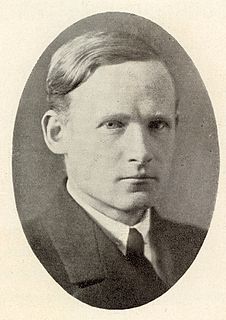 W
WAleksander Ferdinand Oinas was an Estonian politician; he was a long-serving member of the Estonian Parliament (Riigikogu) and served three times as a government minister. was an Estonian politician; he was a long-serving member of the Estonian Parliament (Riigikogu) and served three times as a government minister.
 W
WJohannes Orasmaa, until 1935 Johannes Roska was an Estonian General.
 W
WSerhiy Ostapenko was economist, statesman, and political activist of Ukraine. In the beginning of 1919 he directed the Council of People's Ministers of Ukrainian People's Republic (prime-minister).
 W
WKarl Parts VR I/1, VR II/2, VR II/3 was an Estonian military commander during the Estonian War of Independence.
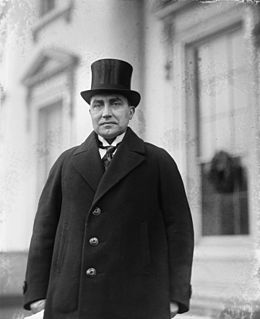 W
WAnts Piip VR III/1 was an Estonian lawyer, diplomat and politician. Piip was the 1st Head of State of Estonia and the 5th Prime Minister of Estonia.
 W
WJaan Piiskar was an Estonian educator and politician.
 W
WTheodor Pool was an Estonian politician, agronomist and writer. He was a member of I, II, III and IV Riigikogu.
 W
WPrince Hieronim Mikołaj Radziwiłł (1885–1945) was a Polish aristocrat, landlord in Balice. Radziwiłł was a great-grandson of Prince Maciej Radziwiłł. He and his children carried the style of Serene Highness.
 W
WMoisei Rafes (1883–1942) was a prominent Jewish politician of the Ukrainian People's Republic as the Bundist representative. After 1919 he was an official of the Bolshevik Party until the victory of Joseph Stalin, when he was imprisoned.
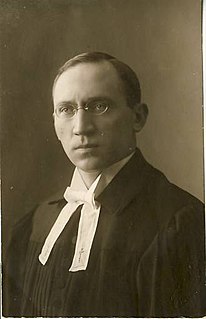 W
WHugo Bernhard Rahamägi was a prominent Estonian prelate and politician who served as Minister for Education in the Estonian government between 1924 and 1925 and later as Bishop of Tallinn and Primate of the Estonian Evangelical Lutheran Church from 1934 till 1939.
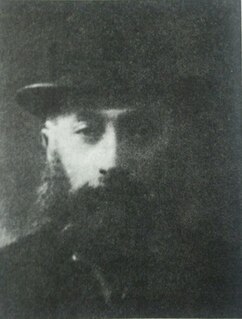 W
WRabbi David HaKohen Rappoport was an Orthodox Jewish rabbi in Baranovich, Belarus. He is known for leading Yeshiva Ohel Torah in Baranovich alongside Rabbi Elchonon Wasserman.
 W
WHugo Raudsepp was an influential and prolific Estonian playwright and politician. In 1951 he was deported to the Irkutsk region by the Soviet authorities, where he died.
 W
WMečislovas Reinys was a Lithuanian Roman Catholic archbishop, a professor at Vytautas Magnus University, a Lithuanian Minister of Foreign Affairs, and a social activist who publicly condemned racism and national hatred. Mečislovas Reinys was imprisoned by the Soviets after refusing to collaborate with the KGB and sent to Vladimir Prison, where he died in 1953.
 W
WBoris Roolaid was an Estonian backstroke swimmer. He competed in the 100 m event at the 1936 Summer Olympics, alongside his younger brother Egon, but failed to reach the final. Roolaid took up swimming in 1932, and between 1935 and 1937 won three national titles. In 1941 both brothers were sent to Soviet labor camps, where they died in 1942–43.
 W
WEgon Roolaid was an Estonian freestyle swimmer. He competed in the 100 m event at the 1936 Summer Olympics, alongside his brother Boris, but failed to reach the final.
 W
WMoses Schorr, Polish: Mojżesz Schorr was a rabbi, Polish historian, politician, Bible scholar, assyriologist and orientalist. Schorr was one of the top experts on the history of the Jews in Poland. He was the first Jewish researcher of Polish archives, historical sources, and pinkasim. The president of the 13th district B'nai B'rith Poland, he was a humanist and modern rabbi who ministered the central synagogue of Poland during its last years before the Holocaust.
 W
WSergei L. Sedov was a Soviet engineer and scientist killed in the Great Purge for being the son of Leon Trotsky.
 W
WAleksandra Lvovna Sokolovskaya was a Russian Marxist revolutionary and Leon Trotsky's first wife. She perished in the Great Purges no earlier than 1938.
 W
WJaan Soots was an Estonian military commander during the Estonian War of Independence and politician.
 W
WYuri Mikhailovich Steklov was a Russian revolutionary, Soviet politician, journalist, editor and historian.
 W
WHeiti Talvik was an Estonian poet.
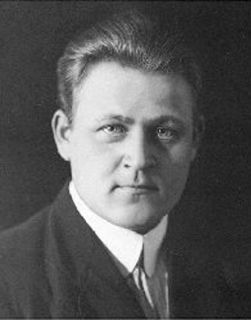 W
WHarald Tammer was an Estonian journalist, athlete and weightlifter. As a heavyweight weightlifter he won a world title in 1922 and a bronze medal at the 1924 Olympics. As an athlete he competed in the shot put at the 1920 and 1924 Olympics and came sixth and twelfth, respectively. He served as the Olympic flag bearer for Estonia in 1920, and as a representative of the Estonian Olympic team in 1928 and 1936.
 W
WJuhan Tõrvand was an Estonian military Major General and sports figure.
 W
WKārlis Augusts Vilhelms Ulmanis ([ˈkaːrlis ˈɑuɡusts ˈvilxɛlms ˈuɫmɑnis], was a Latvian politician. He was one of the most prominent Latvian politicians of pre-World War II Latvia during the interwar period of independence from November 1918 to June 1940. He served four times as Prime Minister, the last time as the head of an authoritarian regime, during which he subsequently also adopted the title of President of Latvia.
 W
WNikolai Vekšin was a Russian Estonian sailor who competed in the 1928 Summer Olympics.
 W
WOskar Veldeman was an Estonian motorsport person, ski jumper and sport journalist.
 W
WSever Ioan Zotta was a Romanian archivist, genealogist, historian and publicist, corresponding member of the Romanian Academy.